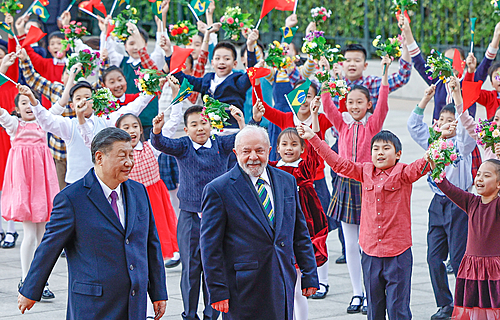
Brazil’s exports to China, in 2023, could reach the historical value of 100 billion dollars, an unprecedented amount even taking into account trade with other countries in the world. The data published by the journalist Assis Moreira in the Brazilian newspaper Economic value They even surprise the government’s own economic team, which anticipated a limit of up to 90 billion dollars in Brazilian remittances to China.
:: Chinese machines for family farming are on their way to the Brazilian Northeast ::
Last year, exports to the Asian country amounted to $89.4 billion, which represented 26% of all Brazil’s international sales in 2022.
If sales of almost half a billion reais are achieved, 30% of all Brazilian trade will go to China this year. In 2014, this percentage was 18%.
:: Joe Biden and Xi Jinping met in San Francisco; military from both countries resumed dialogue ::
In addition to soybeans, minerals and crude oil, the arrival of corn to the business portfolio boosted the commercial relationship between both countries.
Without the dollar
In October, Bank of China Brazil announced an unprecedented feat: the first complete transaction between a Brazilian company and a Chinese company using only reais and yuan, the local currencies of the two countries, avoiding the dollar exchange rate.
According to the Chinese financial institution, the operation was carried out between the months of August and September, and was a pulp export business from Eldorado Brasil, a São Paulo company with representation in Shanghai.
:: The energy transition by 2050 will be ‘slower than necessary’ in Brazil, say experts ::
More recently, another unprecedented initiative has brought China and Brazil a little closer. The Asian country sent a batch of agricultural machinery to the Latin American country.
Equipment such as microtractors, harvesters, seeders and planters will be destined for productive areas of family agriculture in the states of Ceará, Maranhão, Paraíba and Rio Grande do Norte.
There are around 30 machines that can be used in 20 types of crops in areas that include some settlements of the Landless Rural Workers Movement and other family farming organizations, such as the Apodi Rural Workers Union (Rio Grande do Norte).
Editing: Rodrigo Durão Coelho
Source: www.brasildefato.com.br

